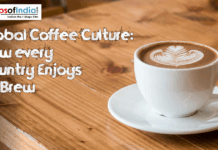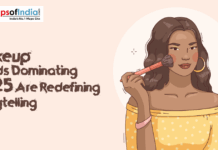Viral trends are spreading through the whole world. They spread rapidly across social media platforms. Social media contains something like a dance challenge, a meme, or a hashtag that can capture millions of viewers overnight. In India, there will be a total of 1.2 billion internet users in 2025. On platforms like Instagram, X, and Facebook. Which fuels these trends? They shape viewers’ behaviour. It influences culture and drives engagement. Psychological factors like curiosity about things. Need for social validation and fear of missing out (FOMO) explain why we click. Trends exploit human emotions and cognitive biases. They create a sense of belonging but can also harm mental health.
Origins of Viral Trends
Viral trends began with the rise of the internet. Early examples include the 2006 “Numa Numa” video on YouTube. Social media platforms accelerated their spread. On social media, anything can become viral like in 2014, the Ice Bucket Challenge raised $115 million for ALS research worldwide. In India the trends like the 2019 TikTok “Pawri Ho Rahi Hai” meme went viral. Platforms use algorithms to promote engaging content. User-generated content fuels trends. Influencers promote these trends on their social media handles and make them more famous among common people. According to a study conducted in 2023. It was found 70% of Indian social media users engage with trends each week. Memes, challenges and filters exploit shareability. Trends often start organically but are boosted by platform algorithms. They thrive on novelty and relatability.
Psychological Drivers of Engagement
Human psychology drives viral trends. The brain craves novelty. Dopamine is released when we see new content. Social validation plays a key role. Collecting likes and shares gives validation and approval to users. FOMO also pushes users to join trends. According to a study conducted in 2021 it showed that 65% of Indian youth feel pressured to participate in these viral trends. The bandwagon effect makes trends contagious. People mimic others to fit in. Curiosity about what is happening around us hooks users. Short and engaging formats like Reels keep most of the users’ attention. Emotional triggers like humour or nostalgia make content more engaging and increase likes and shares. Scarcity such as limited time filters creates a sense of urgency. These factors make clicking irresistible. Platforms design features to exploit these biases.
Impact on Indian Daily Life
Viral trends are now shaping Indian culture. These trends are now influencing fashion sense among youth. It is changing the language we speak and our behaviour. The 2020 Dalgona Coffee trend sparked home brewing in metropolitan cities. Dance challenges like “Jalebi Baby” dominated weddings all across India. Brands leverage these trends for marketing. Making advertisements around these viral trends. Nowadays over 80% of Indian Gen Z discover products via social media. Trends have created their community. Hashtags like these are uniting users. On the other hand these trends disrupt productivity among youth. Students spend 4 to 5 hours daily scrolling through social media. Trends are also used to spread misinformation. According to a recent analysis on x in 2022. It was discovered that 30% of viral health trends available on social media platforms were misleading. They integrate into daily routines but demand balance.
Psychological Impact on Indian Youth
Viral trends affect youth mental health. India has 400 million social media users who are under 25. Constant exposure to trends increases anxiety. Comparison to influencers’ curated lives lowers self esteem. A 2023 survey found 60% of Indian teens feel inadequate due to trends. FOMO drives compulsive checking. Sleep deprivation is common among youth. Students report a 2-hour sleep loss from late night scrolling on social media. Some positive trends have inspired youth to take their life seriously. But we need to remember that cyberbullying spikes during controversial trends. The 2021 “Saree Challenge” led to body shaming comments. Trends offer creative expression but can harm emotional well being if unchecked.
Role of Platforms and Influencers
Social media platforms shape trends. Algorithms prioritise engaging content. Instagram’s Reels feature boosted the short videos trend in India. X’s trending hashtags amplify viral moments. Influencers drive audience participation. Indian creators have millions of followers which amplifies trends and shapes the content we see online. Brands pay influencers $1000 to $10000 per social media post. Platforms test features like Instagram’s 2023 “Collab” tool to spark trends. But they face scrutiny. There needs to be proper control on the spread of misinformation. Platforms must balance engagement with responsibility. Influencers should promote ethical trends. Regulation and user awareness are key.
Strategies to Tackle Viral Trends
Managing viral trends requires awareness. Setting time limits for social media. Using an application which helps to minimise social media use. According to a recent study in 2023 it has been seen that 50% of Indian users reduced stress with time management. Curate feeds to avoid toxic content. Unfollow accounts promoting harmful trends. Parents sometimes monitor teen usage with apps like Qustodio. Educate youth on misinformation. Schools need to teach media literacy. Verify sources before sharing. Fact checking sites which provide information. Adopting offline hobbies. Art and sports reduce screen time. Balance engagement with well being. Critical thinking prevents blind participation.
Future of Viral Trends in India
Viral trends will evolve with technology. AI driven content creation is on the rise. Nowadays 20% of Indian Reels use AI filters or have used AI. Metaverse platforms may host immersive trends. India’s 5G rollout boosts video consumption. Trends will become more localized. Regional languages like Tamil and Bengali are also gaining viewers on social media. On the other hand, mental health concerns are growing. In the coming years youth around the world may face social media burnout. Regulations may tighten. India’s IT Ministry proposed stricter platform laws in 2024. Trends will remain influential. Responsible creation and consumption will shape their future.
Conclusion
Viral trends captivate millions in India. They tap into psychological needs for novelty. Look for validation and belonging. From the Ice Bucket Challenge to “Pawri Ho Rahi Hai,” trends shape culture and behaviour. They influence youth’s driving creativity but also anxiety. Platforms and influencers amplify their reach, often exploiting cognitive biases. In India there are 1.2 billion internet users. Trends are a daily reality. Strategies like time limits and media literacy can mitigate negative effects. The future holds more personalised and AI driven trends. Balancing engagement with well being is crucial. India’s youth should navigate this platform thoroughly. Brands and platforms must think about youth before promoting a trend. Viral trends are powerful but require mindful participation to ensure a positive impact.





